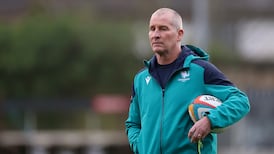Talking Point: Supporters deserve greater clarity in the stadium than a one-and-done replay
The decision not to show further angles of Richie Mo’unga’s shoulder to Bundee Aki’s jaw was baffling

Join The Irish Times on WhatsApp and stay up to date
What’s making headlines in the rugby world? Listen to The Counter Ruck podcast with Nathan Johns
Sign up for The Counter Ruck rugby digest to read Gerry Thornley’s weekly view from the press box











